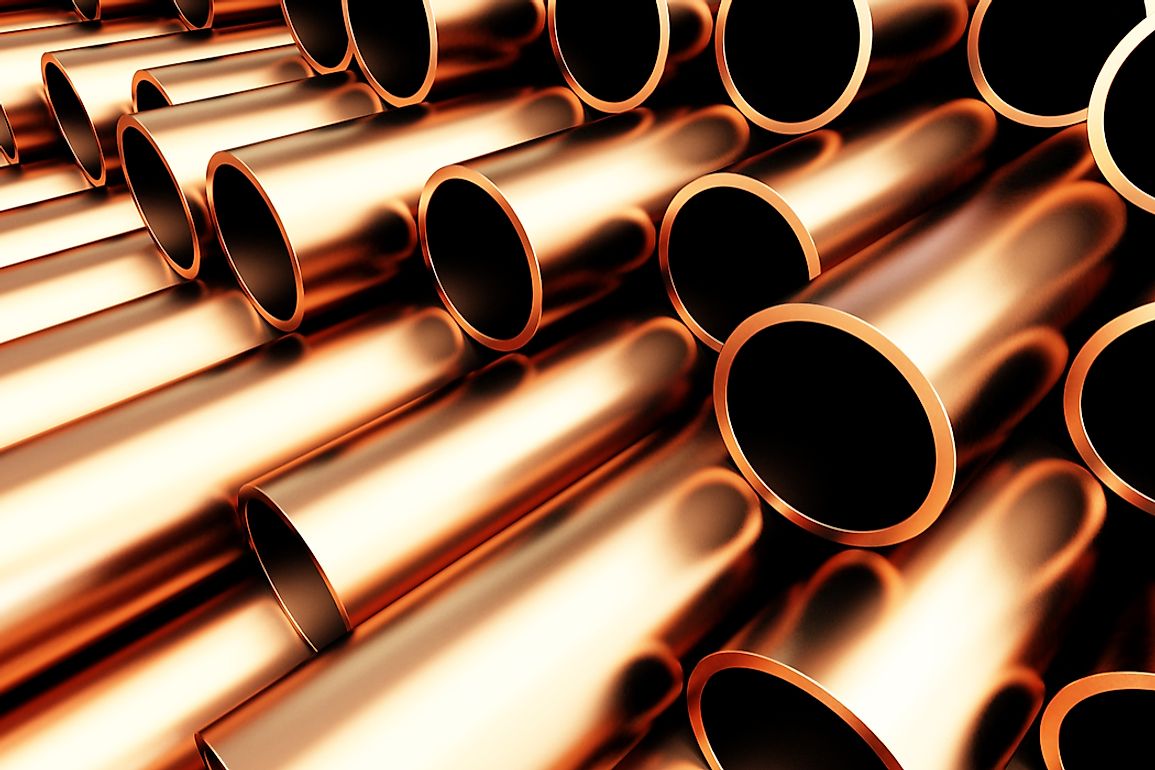What is Copper?

5. Description
Copper is a metallic chemical element that is well known for its ductile and malleable properties. Its atomic number is 29, and it is often referred to by the elemental symbol "Cu" in scientific applications. With a melting point of 1,085 degrees Celsius (1,985oF, 1,358 Kelvin), Copper has an atomic mass of 63.546 and a molecular mass of 63.546 grams per mole. The element and its derivatives are commonly used for their high thermal and electrical conductivities. Discovered circa 9,000 BC around the Middle Eastern region, pure Copper comes in a shiny, red and metallic state. In times past, coin currencies were often made out of copper as well.
4. Location
Copper was originally discovered in the Eastern Mediterranean by the Egyptians around 8,700 BC. The name Copper stems from the Latin word "cuprum", meaning “from the island of Cyprus. Copper is considered as one of the oldest metals known to man, and is distributed in the form of around 400 copper alloys. Even in the human diet, Copper is a nutrient essential for good health. To source it, humans can consume copper-rich foods such as organ meats, shellfish, almonds, broccoli, and dried beans, to name a few. Though the initial discovery of Copper was made by the Egyptians, it is not only found in parts of Africa and the Middle East, but in fact across much of the globe, especially in South America, East Asia, and the United States. Many of the largest deposits of Copper ores to be found in North America lie in places in Michigan, along with parts of Arizona, Montana, and New Mexico.
3. Formation
Copper is mined worldwide, although the process of refining and purifying Copper are fairly similar across the globe. Extraction of copper ore is typically carried out by either the traditional method of mining (open pit or underground) or by leaching, wherein it is extracted . After the ore is mined, it will go through seven finishing steps. Namely, these steps are grinding, concentrating, roasting, smelting, conversion, anode casting, and electro-refining. After finishing, it will be ready to be used for commercial applications.
2. Uses
Copper is used for a variety of reasons, ranging from coin currency to electrical rods. In 1792, the first American coins were printed, with copper, silver, and gold all used to differentiate between the worth of the elementally different coins. Today, numerous coins used by Canada and the United States of America are still made in part out of copper alloys. Due to its high conductivity and heat rate, Copper is most importantly used in electrical wiring, as well as in heat exchangers in industrial machinery.
1. Production
In order to extract Copper from Earth’s crust it must be drilled or leached out. Chile is by far the leading producer of Copper today, producing an average of 5,800 thousand tons per year. China, Peru, and the United States follow it, combining to produce 4,390 thousand tons collectively. As of January 2016, the cost of copper per pound stood at $1.98 USD, as stated by the LME. Portions of leftover Copper are sometimes sold on the black market after being taken from that scrapped by construction sites.











